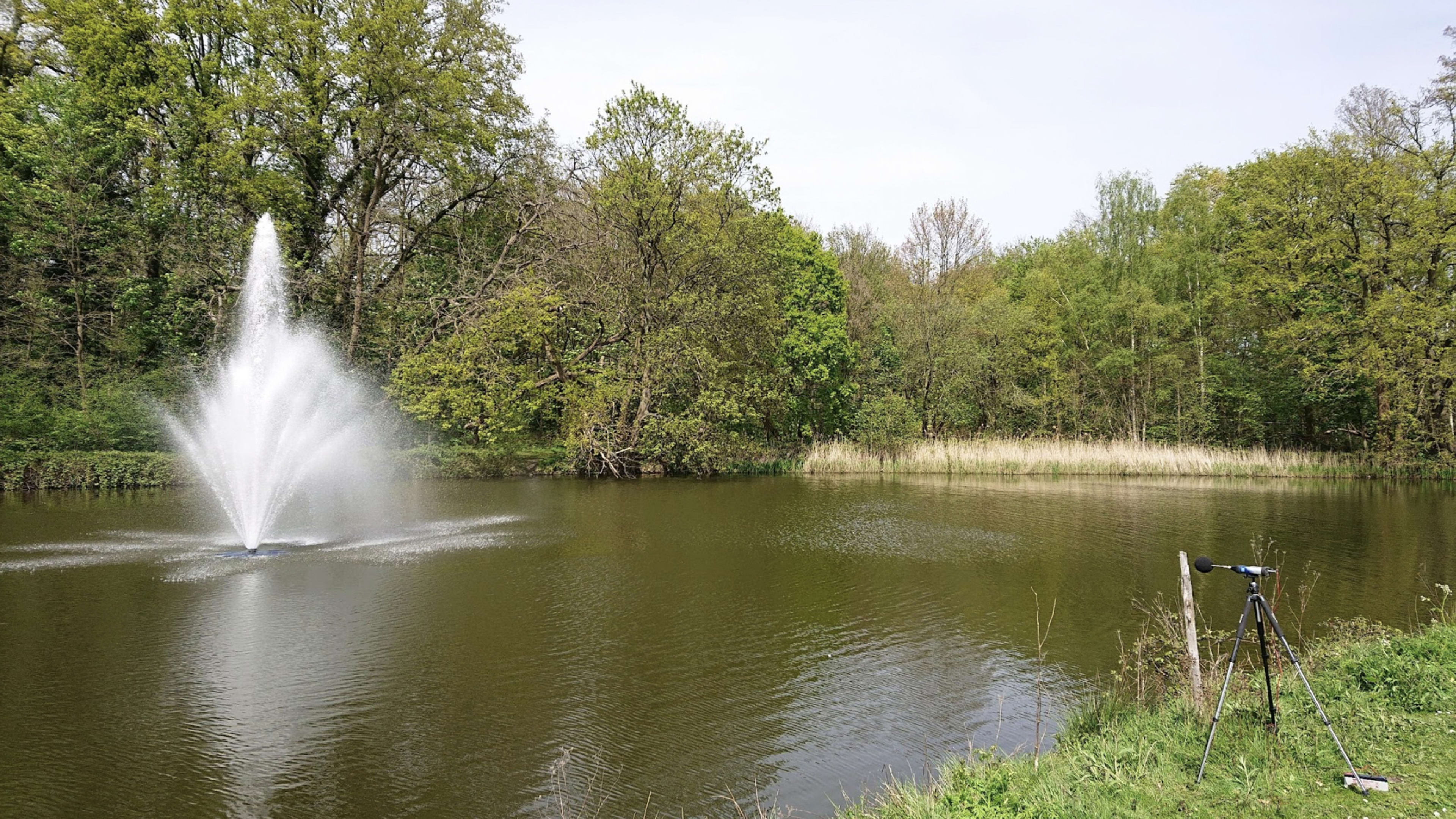At a city park in Antwerp, the sound of traffic is constant. The park sits next to a major highway. But the city is now redesigning the space to make it more peaceful—including adding noise-canceling fountains that can help mask the drone of cars and trucks.
The city wanted to “improve the sound climate in the park, and to create a place where people can find rest and, for a while, escape the urban hustle,” says Raf Verbruggen, Antwerp’s project lead on urban soundscaping. “In cities all over the world, there is an urgent need for such restorative places.”
The government worked with a researcher at Ghent University who recorded the sounds of several existing fountains in the city, measuring the frequencies, dynamics, tone, and sound levels. That made it possible to design configurations of fountains to help cover the traffic noise. “The signal-to-noise ratio is very important here: The fountains should sound at least as loud as the traffic, but not too much louder,” Verbruggen says.

But the city also knew that the experience of sounds is subjective, so it partnered with Aifoon—an art organization focused on sound—to let the community have a say in the design. “We’re giving agency to inhabitants to think about what kinds of sounds you want to live with, and how you would compose your city in sounds,” says Aifoon artistic director Stijn Dickel. The organization projected recordings of different fountains in the park, and community members voted on them, both in terms of how well they masked traffic and whether the sounds were pleasant or irritating.

A design based on the most popular fountains will be installed next year. (The city hasn’t yet finalized the exact configuration.) The city is also making other changes, including adding grooves to the road that can help reduce traffic noise by as much as four decibels. A new noise reduction wall will also help cut noise both in the surrounding neighborhood and the park. Inside the park, a new staircase helps lead visitors down to a lower level where it’s quieter.

Most importantly, the city is also reducing traffic—by the end of the decade, the region is aiming for half of all trips to be made by bike, train, tram, bus, car-share, or other public transit. And while a growing number of cars are electric, EVs alone can’t solve the urban noise problem; when cars drive faster than 25 miles an hour, Verbruggen says, the noise from the tires on the pavement is as loud as the engine. “It’s important not only to make the shift toward electric vehicles, but also to lower traffic speeds,” he says. Antwerp recently reduced the speed limit in most residential areas to 20 mph. The city is also building more “living streets” that prioritize people who are walking and biking, not cars.
But at the park, and in other areas near highways where traffic noise persists, more fountains might help. “Antwerp has several parks close to a motorway or busy road for which the insights gained from this experiment could be very useful,” says Verbruggen.
Recognize your brand’s excellence by applying to this year’s Brands That Matter Awards before the final deadline, June 7.
Sign up for Brands That Matter notifications here.
